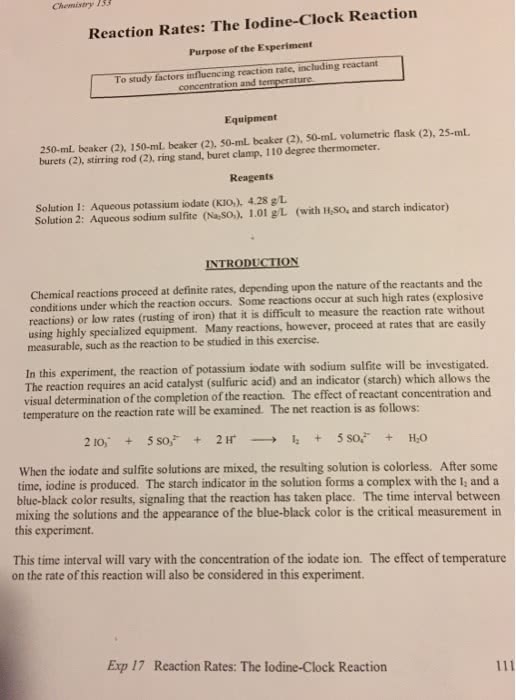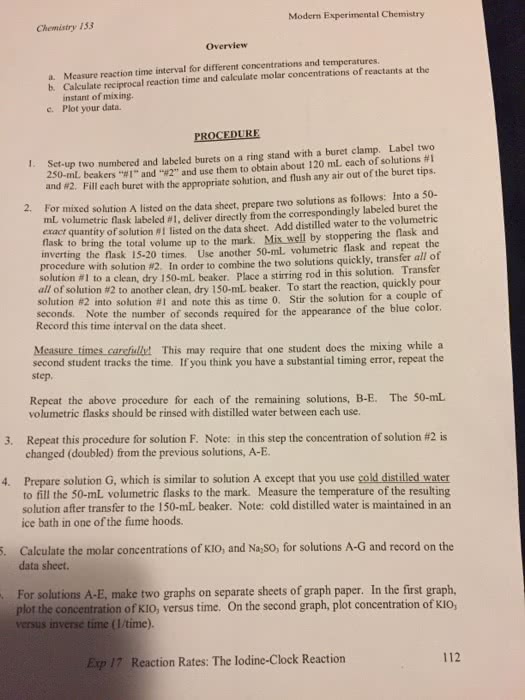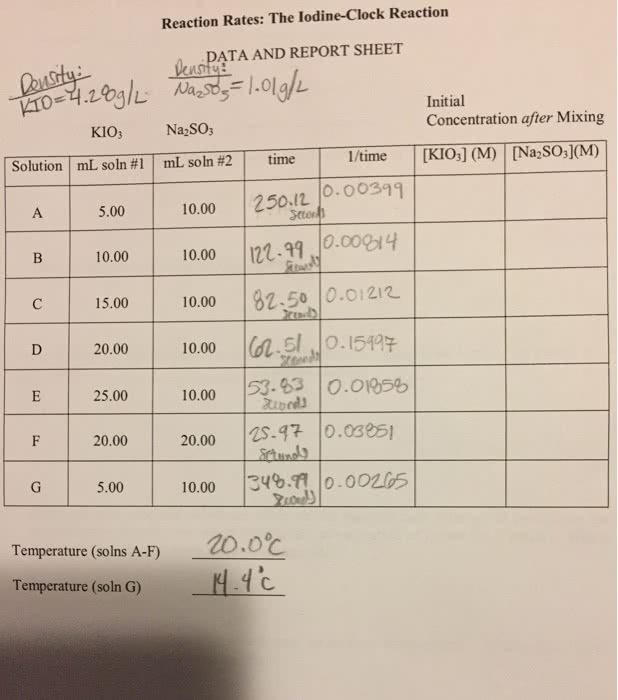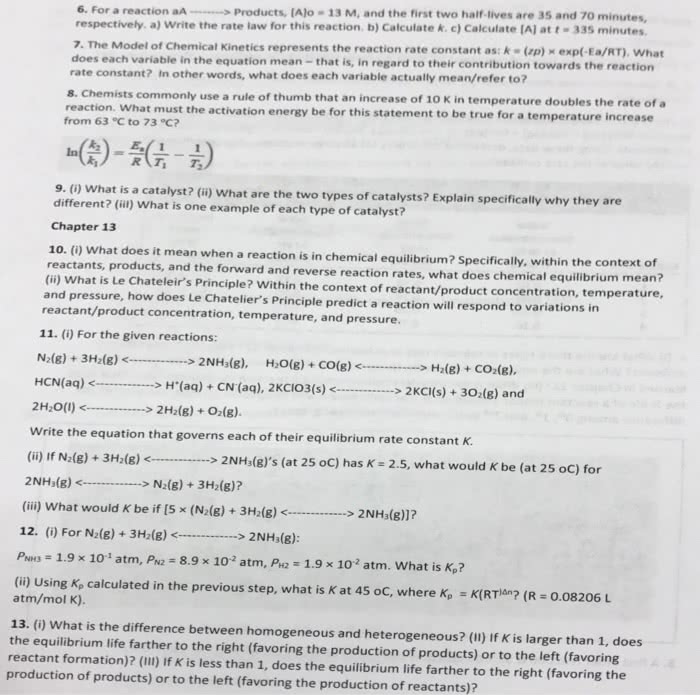CHEM 1040 Lecture Notes - Lecture 13: Gibbs Free Energy, Intermolecular Force, Arrhenius Equation
43 views15 pages
11 Dec 2016
School
Department
Course
Professor
Document Summary
Chemical reactions require different lengths of time for completion. How reaction rates change under varying conditions. What molecular events occur during the overall reaction. However in some reactions, rate is unaffected. Catalyst (a substance that increases the reaction rate without being consumed) Does not disappear in the balanced equation. Reaction usually speeds up when the temp increases. Surface area of a solid reactant or catalyst. The amount of product formed / reactant used up per unit time. The increase in molar concentration of product of a reaction or the decrease in molar concentration of reactant per unit time. *rate calculation does not depend on the total quantity of reaction mixture used e. g 2n2o5(g) 4no2(g) + o2(g) rate can be found by: 1). [o2] / t (if time interval is long, this equation gives the average rate) (if time interval is short, this equation gives the instantaneous rate)
Get access
Grade+
$40 USD/m
Billed monthly

Homework Help
Study Guides
Textbook Solutions
Class Notes
Textbook Notes
Booster Class
10 Verified Answers
Class+
$30 USD/m
Billed monthly

Homework Help
Study Guides
Textbook Solutions
Class Notes
Textbook Notes
Booster Class
7 Verified Answers
Related textbook solutions
Chemistry: Structure and Properties
2 Edition,
Tro
ISBN: 9780134293936
Basic Chemistry
5 Edition,
Timberlake
ISBN: 9780134138046
Principles of Chemistry Molecular Approach
4th Edition,
Tro
ISBN: 9780134112831
Chemistry: Structure and Properties
2nd Edition,
Tro
ISBN: 9780134293936
Principles of Chemistry Molecular Approach
3rd Edition, 2014
Tro
ISBN: 9780321971944
Chemistry: A Molecular Approach
3rd Edition,
Tro
ISBN: 9780321809247
Chemistry: A Molecular Approach
5th Edition,
Tro
ISBN: 9780134874371
Principles of Chemistry: A Molecular Approach
4th Edition,
Tro
ISBN: 9780134895741
Chemistry: The Central Science
14th Edition, 2017
Brown
ISBN: 9780134414232
Related Documents
Related Questions
Hi, I have a lab and have provided the information below and the data calculated at the end. Please help in prelab questions and postlab questions. WIll rate really good if it's correct. Thanks a lot.
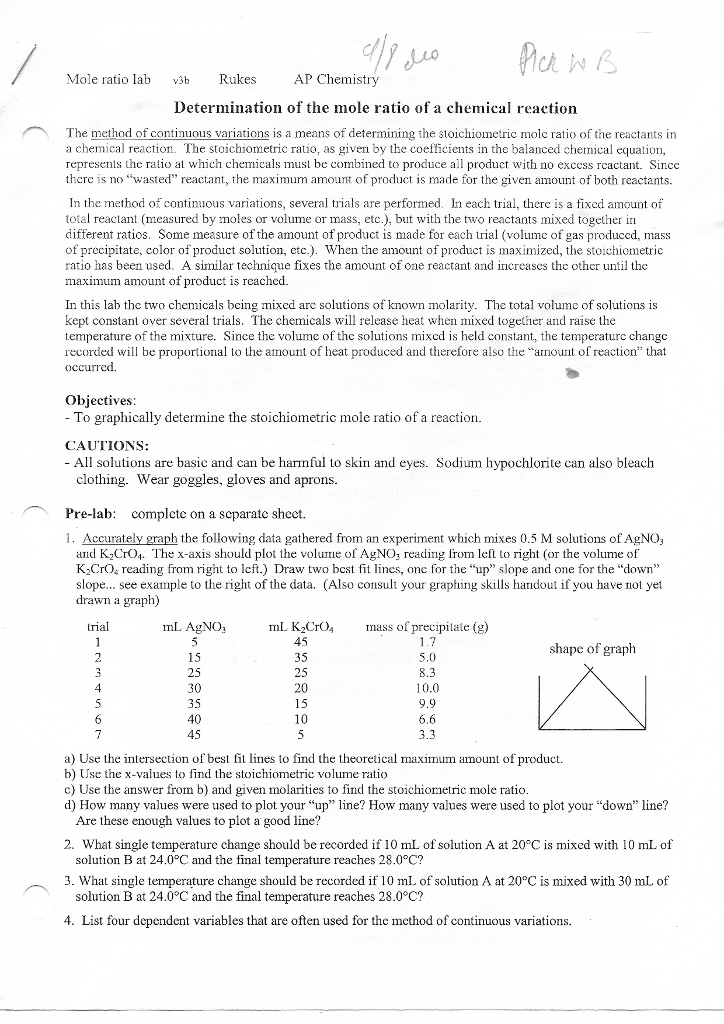
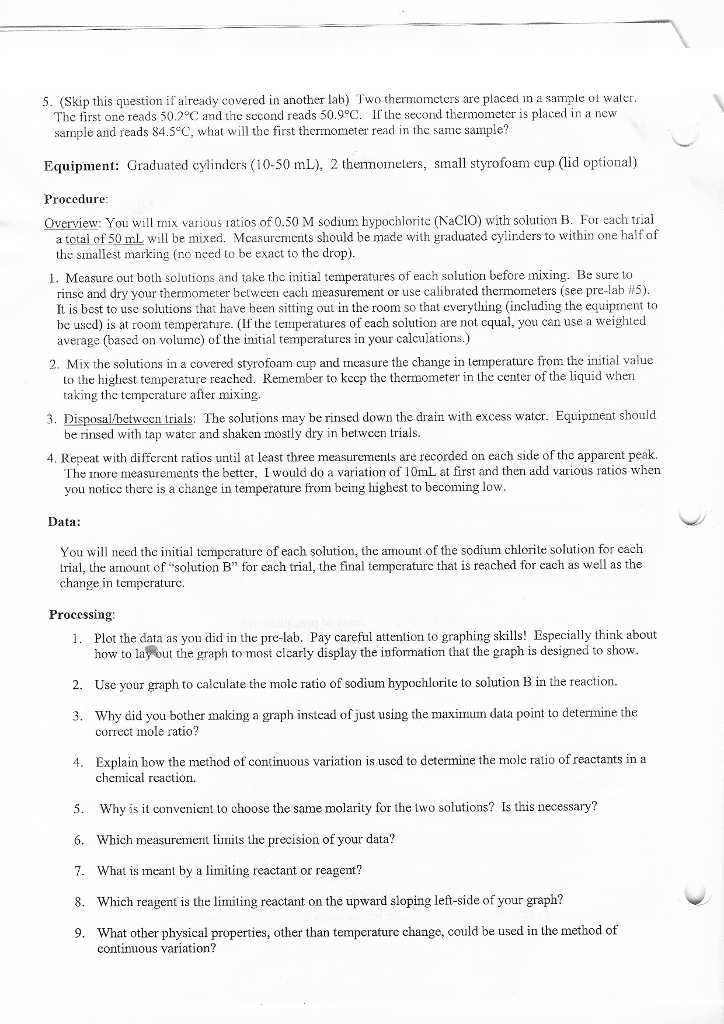
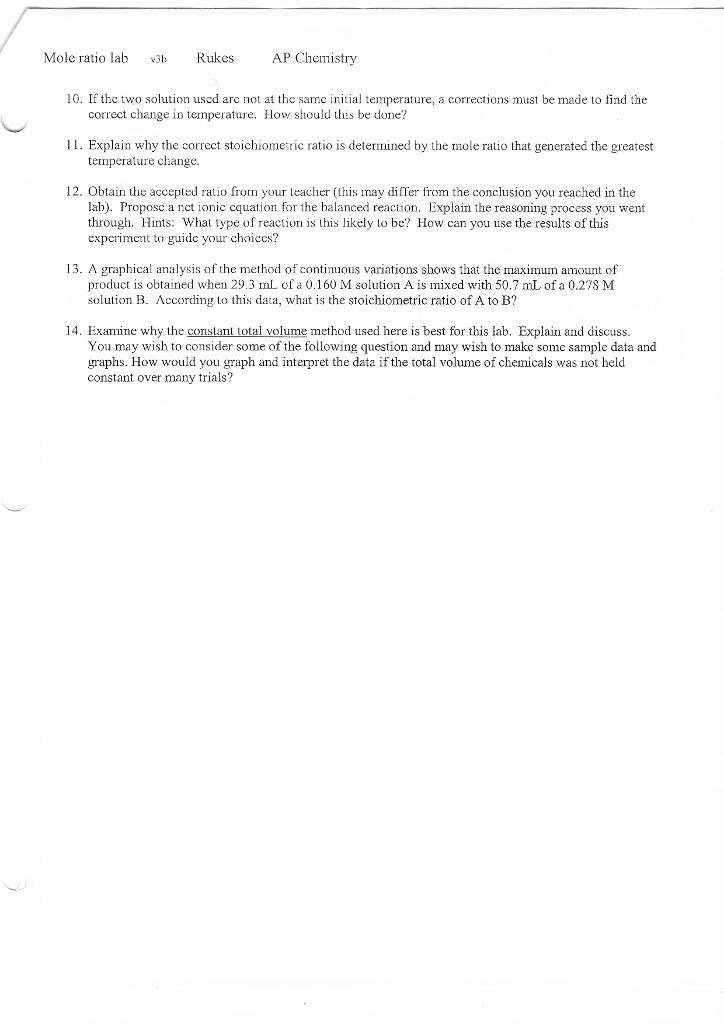
DATA (The total liquid should be 50ml, not more than that)
| SNO. | NACLO (intial temperature) | THE (B) Liquid temperature | NaClo(g) | The B solution(g) | FINAL temperature(together) |
| 1 | 21.7 | 21.5 | 10ml | 40ml | 30.4 |
| 2 | none | 21.5 | 0ml | 50ml | 21.5 |
| 3 | 21.8 | none | 50ml | 0ml | 21.8 |
| 4 | 21.9 | 21.7 | 20ml | 30ml | 38.4 |
| 5 | 21.9 | 21.7 | 30ml | 20ml | 37.4 |
| 6 | 22.0 | 21.7 | 40ml | 10ml | 28.8 |
| 7 | 22.1 | 21.9 | 25ml | 25ml | 42.2 |
Mole ratio lab v3b Rukes APChemistry Determination of the mole ratio of a chemical reaction The method of continuous variations is a means of determining the stoichiometric mole ratio of the reactants in a chemical reaction. The stoichiometric ratio, as given by the coelficients in the balanced chemical equation, represents the ratio at which chemicals must be combined to produce al product with no excess rcactant. Sincc there is no âwasted" reactant, the maximum amount of product is made for the given amount of both reactants. In themethod of continuous variations, several trials are performed. In each trial, there is a fixed amount of total reactant (measured by moles or volume or mass, etc.), but with the two reactants mixed together in different ratios. Some measure of the amount of product is made for each trial (volumc of gas produccd, mass of precipitate, color of product solution, etc.). When the amount of product is maximized, the stoichiometric ratio has been used. A similar technique fixes the amount of one reactant and increases the other until the maximum amount of product is reached In this lab the two chemicals being mixed are solutions of known molarity. The total volume of solutions is kept constant over several trials. The chemicals will release heat when mixed together and raise the temperature of the mixture. Since the volume of the solutions mixed is held constant, the temperaturc changc recorded wl be proportional to the amount of heat produced and therefore also the "anount of reaction" that occurred. Objectives - To graphically determine the stoichiometric mole ratio of a reaction. CAUTIONS: All solutions are basic and can be harmful to skin and eyes. Sodium hypochlorite can also bleaclh clothing. Wear goggles, gloves and aprons. ︵ Pre-lab: complete on a separate sheet. 1. Accurately graph the following data gathered from an experiment which mixes 0.5 M solutions of AgNO3 and K2CrO4. The x-axis should plot the volume of AgNO3 reading Irom lef to right (or the volume of K2CrO4 reading from right to left.) Draw two best fit lincs, one for the "up" slope and one for the "down" slope... see example to the right of the data. (Also consult your graphing skills handout if you have not yet drawn a graph) trial mL AgNO3 mL K2CrO mass of precipitate (g) 45 35 25 20 15 10 shape of graph 15 25 30 35 40 45 5.0 4 10.0 9.9 6.6 3.3 a) Use the intersection of best fit lines to find the theoretical maximum amount of product. b) Use the x-values to find the stoichiometric volume ratio c) Use the answer from b) and given molarities to find the stoichiornetric mole ratio d) How many values were used to plot your "up" line? How many values were used to plot your "down" line? 2. What single temperature change should be recorded if 10 mL of solution A at 20°C is mixed with 10 mL of 3. What single temperature change should be recorded if 10 mL of solution A at 20°C is mixed with 30 mL of 4. List four dependent variables that are often used for the method of continuous variations. Are these enough values to plot a good line? solution B at 24.0°C and the final temperature reaches 28.0°C? solution B at 24.0°C and the final temperature reaches 28.0°C?
